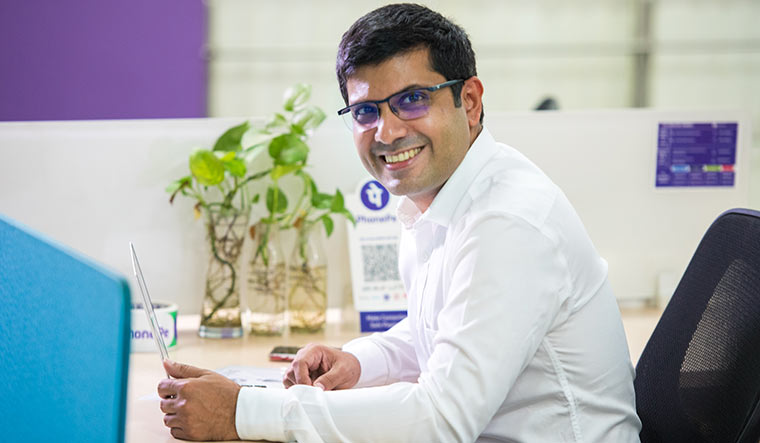WITH MORE THAN 230 million registered users, PhonePe has become a household name. The digital wallet and online payment company saw a spike in its business during the lockdown. Rahul Chari, cofounder and chief technology officer of the company, talks about the opportunities, challenges and intense competition in the segment and what the future holds for the digital payment platforms.
How has the digital payments segment been affected by the pandemic and the lockdown?
During the nationwide lockdown, digital payment platforms were an essential service given their utilitarian nature. According to NPCI, the UPI transactions in February 2020 were at an all-time high of 132 crore transactions, corresponding to a transaction value of Rs2.21 lakh crore. While there was a fall over the following two months owing to the lockdown, the rebound happened in May and June and the transactions have been increasing with each passing month since then.
In September, UPI registered 180 crore transactions with a transaction value of Rs3.29 lakh crore. We saw the highest ever organic user acquisition during this period. Our new user acquisition numbers have increased by 50 per cent and it is heartening to see digital payments being adopted by users across age groups, income levels, and locations. The growth momentum is expected to continue in the festive season and the subsequent months with the economy opening up.
What are the challenges that the segment has to deal with, especially when it comes to regulations?
The digital payments segment is going through a massive growth cycle. The government and the regulators have played a critical role in enabling the growth. Regulations have played an enabling role for all stakeholders and we continue to adapt to any new changes. Merchant acceptance is a very important factor contributing towards growth of digital payments and merchant discount rate (MDR, a fee merchants are charged for processing card transactions) plays a critical role in fuelling the growth of acceptance across the country. Without any incentive the prevailing zero MDR regime will impact investments in building merchant acceptance. We are hopeful that the government and regulators will consider the needs of the payments ecosystem and bring in a reasonable MDR structure.
Acquiring new customers and retaining them are a challenge for digital wallet companies. How do you deal with it?
When the product experience and the service quality are good, there is natural affinity and loyalty from customers. Service quality parameters such as the speed of transactions, customer support and user interface matter more to customers in the long run. This is because beyond a certain value of transactions, reliability of the transaction plays a more important role than the incentives.
We have always maintained that cashbacks are not sustainable and our cashback disbursal has significantly gone down over the past 12 months. We use machine learning to decide when somebody needs an incentive and typically incentivise only the first transaction. The cost of acquiring users and the need for capital is lower now than what we had spent in 2018 and 2019. We believe that as long as we provide a safe, secure and user-friendly digital payments platform and continue to innovate, the adoption and usage will take care of itself.
What are some of the key consumer trends in the digital payments segment and what is its future in India?
The new environment has already started changing consumer and business habits across a variety of sectors. We will continue to see a surge in the adoption of digital payments in the country across all demographic segments. Businesses, both online and offline are keener than ever to partner with digital payment platforms to accelerate their growth. In particular, offline merchants are embracing additional business models including home delivery in addition to opening up a digital presence. Users are also increasingly comfortable buying financial services products digitally. Payment platforms with their large consumer base and a wide variety of use cases will actively enable and shape the above consumer and business habits.
What will be the key focus areas for PhonePe over the next few years?
Our focus will be on growing our user base to 500 million from the current 230 million, launching more products in the financial services space, growing the offline merchant network to 25 million, covering every corner of the country and partnering with more brands on our Switch platform. Currently we have 220 partner apps.
There have been reports that PhonePe is planning an IPO in the next two years.
PhonePe has a line of sight to become profitable by 2022 and plans to file for an IPO in 2023. It is a bit too early to comment on the specifics.


